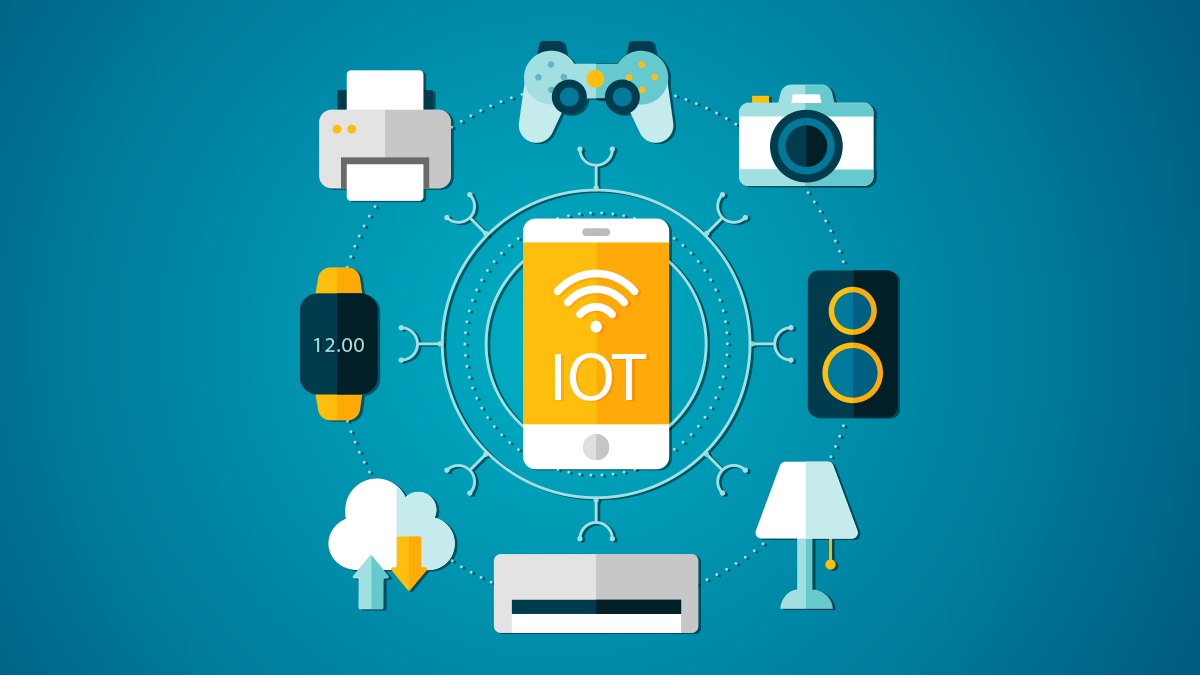Securing IoT Devices: Behind The Firewall Guide & Best Practices
As the Internet of Things (IoT) continues to weave its way into the fabric of our lives, are you prepared for the heightened security challenges that come with it?
Securing IoT devices behind firewalls is no longer just a recommendation; it's a crucial necessity for any business or organization that values data security, operational integrity, and customer trust.
In today's interconnected world, the proliferation of IoT devices is reshaping industries, from the bustling floors of manufacturing plants to the sterile environments of healthcare facilities. However, this expansion comes with a complex web of security challenges, particularly concerning data privacy and the protection of sensitive information. This article delves into the best practices for navigating the often-turbulent waters of IoT network management, specifically focusing on the vital role firewalls play in securing these devices.
- 7starhd Your Ultimate Guide To Streaming Movies Tv Shows
- Unlocking Creativity The Ultimate Guide To Infinite Crafts
The following information will equip you with a deep understanding of the key considerations, powerful tools, and proven strategies needed to effectively manage IoT devices while upholding robust security and maximizing operational efficiency. This guidance is crafted for IT professionals, network administrators, and decision-makers alike, offering the insights needed to manage the intricate world of IoT network management.
Introduction to IoT Behind Firewall Challenges of Managing IoT Behind Firewalls Security Best Practices for IoT Devices The Importance of Network Segmentation Firewall Configuration for IoT Devices Monitoring Tools for IoT Devices Data Privacy Considerations Real-World Examples of IoT Behind Firewalls Cost-Efficiency in IoT Deployment Future Trends in IoT SecurityIntroduction to IoT Behind Firewall
The cornerstone of a secure IoT deployment is the intelligent management of devices behind a robust firewall. Firewalls act as the gatekeepers of your network, ensuring that only authorized communication and data transfers occur. This is critical for safeguarding IoT devices from external threats and ensuring data integrity.
Why Firewalls Are Crucial for IoT
Firewalls create a protective barrier between your IoT devices and the external world, meticulously filtering out malicious traffic and ensuring that only approved data flows are allowed. In the context of industrial environments, for example, firewalls are indispensable for preventing unauthorized access to critical machinery and safeguarding sensitive operational data.
- Secure Remote Iot Access Vpc Ssh On Raspberry Pi Free Windows Tools
- Ims Kirby Dog Incident What Happened Why It Matters
Moreover, firewalls play a key role in assisting organizations in meeting regulatory requirements, such as GDPR and HIPAA, by enforcing strict data access policies and maintaining data confidentiality.
Challenges of Managing IoT Behind Firewalls
While firewalls offer a high level of security, the process of managing IoT devices behind them introduces unique challenges that must be addressed. These challenges encompass device diversity, the limited computational resources of many IoT devices, and the need for real-time data processing capabilities.
Device Diversity
One of the major hurdles in IoT security is the sheer variety of devices. These devices, from the most compact sensors to expansive industrial equipment, each possess their own unique communication protocols, security needs, and operational profiles. This can create considerable complexity when integrating new devices into existing network infrastructures.
Limited Resources
Many IoT devices are designed with constraints on computational power and memory. This poses a significant hurdle when implementing advanced security features. Therefore, organizations must prioritize lightweight security solutions that don't compromise performance.
Security Best Practices for IoT Devices
To successfully manage IoT devices behind firewalls, it's critical to implement a collection of security best practices. The following are some key strategies that organizations should prioritize:
- Regularly update the firmware and software on all devices to patch any discovered vulnerabilities.
- Utilize robust authentication mechanisms, such as multi-factor authentication (MFA), to ensure that only authorized users can access the devices.
- Encrypt all data, both while it's being transmitted and when it's stored, to protect sensitive information from unauthorized access.
- Implement continuous monitoring of network activity to detect any signs of suspicious behavior or potential security breaches.
The Importance of Network Segmentation
Network segmentation involves dividing a network into smaller subnetworks, each with its own security policies. By isolating IoT devices from critical business systems, this approach significantly enhances the overall security posture.
Benefits of Network Segmentation
- Reduces the attack surface by limiting potential access to sensitive areas of the network.
- Improves overall network performance by reducing congestion and streamlining data flow.
- Simplifies the management and monitoring of IoT devices, making it easier to identify and address security issues.
Firewall Configuration for IoT Devices
The configuration of firewalls for IoT devices requires a delicate balance between security and functionality. Organizations must carefully craft rules and policies to ensure seamless communication without compromising the overall security of the system.
Key Considerations
- Define clear access rules for each IoT device, based on its specific role and function within the network.
- Integrate intrusion detection and prevention systems (IDPS) to continually monitor the network and rapidly respond to emerging threats.
- Establish a schedule for regularly reviewing and updating firewall rules to adapt to the ever-changing landscape of security threats and vulnerabilities.
Monitoring Tools for IoT Devices
Effective monitoring is the bedrock of a strong security posture for IoT devices. Organizations need a clear understanding of the devices operating on their networks and must be able to detect and respond to anomalies. Various tools are available to help organizations track device activity and detect anomalies.
Popular Monitoring Tools
- Splunk: A powerful platform for analyzing and visualizing IoT data, providing valuable insights into device behavior and potential security threats.
- Wireshark: A network protocol analyzer that enables detailed monitoring and troubleshooting of IoT traffic, helping identify and resolve connectivity issues.
- Palo Alto Networks: Offers advanced threat detection and response capabilities, allowing organizations to proactively identify and mitigate security risks.
Data Privacy Considerations
In the context of managing IoT devices behind firewalls, data privacy is an extremely important consideration. Organizations must ensure that sensitive information is protected and that user privacy is strictly respected.
Compliance with Regulations
Adhering to regulations such as GDPR and CCPA is essential for maintaining data privacy. Organizations should implement robust data protection measures, such as encryption and access controls, to comply with these regulations.
Real-World Examples of IoT Behind Firewalls
Several organizations have successfully implemented IoT solutions behind firewalls, achieving significant improvements in security and efficiency. Below are two examples:
Example 1
A manufacturing plant deployed IoT sensors to monitor production lines, using firewalls to secure communication between devices. This setup enabled real-time monitoring and predictive maintenance, reducing downtime and improving productivity.
Example 2
A hospital implemented IoT devices for patient monitoring, ensuring data privacy through strict firewall policies. This solution allowed healthcare providers to access critical patient information securely, enhancing care quality.
Cost-Efficiency in IoT Deployment
Managing IoT devices behind firewalls can be cost-effective when implemented correctly. By optimizing resource usage and reducing downtime, organizations can achieve significant cost savings.
Strategies for Cost Efficiency
- Adopt cloud-based solutions to reduce infrastructure costs and improve scalability.
- Implement automated monitoring and maintenance processes to streamline operations.
- Use open-source tools where possible to minimize expenses and reduce vendor lock-in.
Future Trends in IoT Security
The field of IoT security is dynamic, shaped by emerging technologies and evolving threats. Organizations must remain well-informed about these trends to proactively maintain a robust security posture.
Key Trends
- Artificial intelligence (AI) and machine learning (ML) are being increasingly utilized for advanced threat detection and proactive security measures.
- Blockchain technology is gaining prominence as a way to secure data storage and ensure secure data verification within IoT environments.
- Quantum cryptography is emerging as a powerful approach to advanced encryption methods, with the potential to revolutionize data security in the future.


Detail Author:
- Name : Torrey Armstrong
- Username : aric.raynor
- Email : ogerhold@hotmail.com
- Birthdate : 1995-10-03
- Address : 48125 Joana Rue New Kayaton, MS 42230-2255
- Phone : +1-279-768-3745
- Company : Dicki-Toy
- Job : Maid
- Bio : Temporibus non velit molestiae rerum. Ad pariatur id qui quia eaque. Expedita debitis qui voluptatem vero. Sit quis blanditiis tenetur neque.
Socials
tiktok:
- url : https://tiktok.com/@lilyan.dare
- username : lilyan.dare
- bio : Sunt repellat possimus ut et. Et repellat aperiam aspernatur dolore.
- followers : 981
- following : 1204
facebook:
- url : https://facebook.com/dare1987
- username : dare1987
- bio : Maxime ipsum omnis expedita beatae.
- followers : 2842
- following : 2173